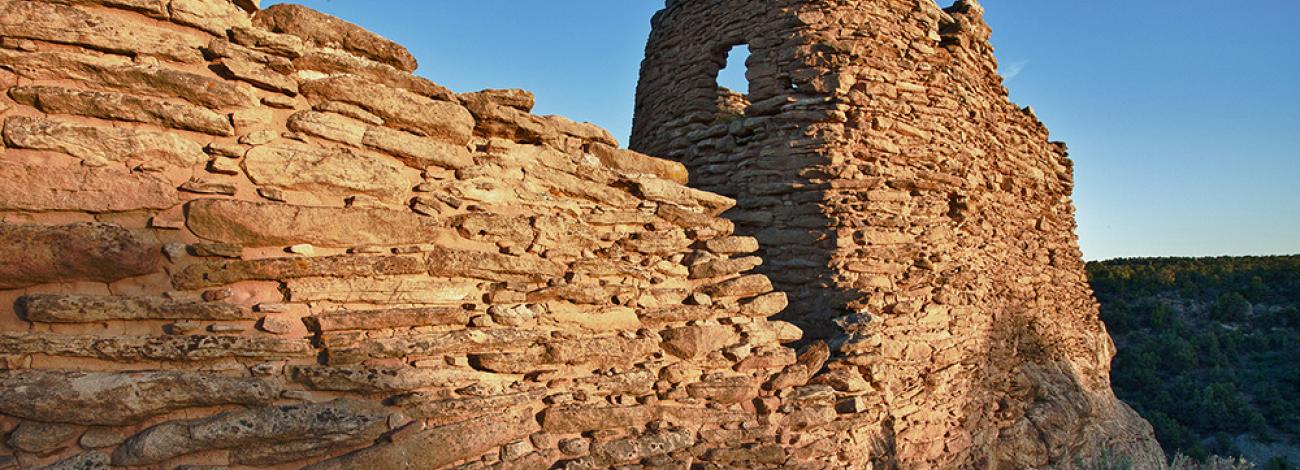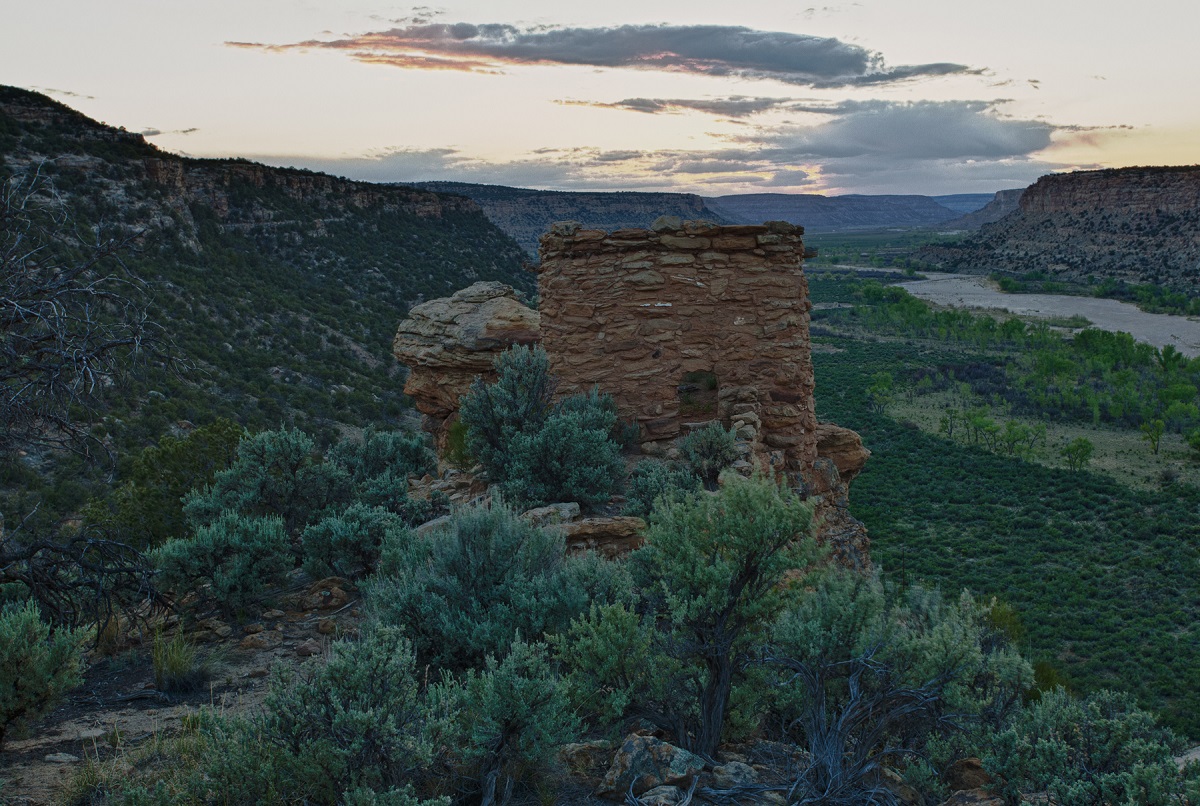
BLM New Mexico Archaeology
BLM New Mexico manages a wide variety of cultural resources, including internationally recognized World Heritage List Chacoan Outliers, the dramatic architecture of 18th century Navajo refugee sites, dry caves and rock shelters containing remarkably well-preserved materials thousands of years old, huge lithic and ceramic scatters that can extend for over a mile in diameter, and outstanding rock art. In addition to these sites, the BLM is also responsible for portions of several National Historic Trails such as El Camino Real de Tierra Adentro, the Old Spanish Trail, and the Butterfield Overland Trail, as well as homesteads occupied by Hispanic families, early Euroamerican settlers, and many other amazing resources.
In managing these resources, the BLM places a strong emphasis on government-to-government relations with American Indian Tribes with interests in the four-state area. Many Tribes and Tribal members do business with BLM. By law, BLM also has a trust responsibility to the Tribes in the management of some natural resources. The BLM works closely with tribes to conserve and protect cultural and natural resources on public lands. In addition to the Tribes, the BLM also coordinates with local and national historic preservation groups to ensure that our cultural resources are managed and maintained appropriately.
- Permits
-
Application for an Archaeological Permit
Any firm not currently permitted may apply for a Cultural Resource Use Permit by submitting the DI Form 1926 (Application for Permit for Archaeological Investigations) and required supporting documentation to the New Mexico State Office. Survey Permit applications should not be sent directly to the Field Offices.
Request for Modification of Cultural Resource Use Permit
A Request for Modification of Cultural Resource Use Permit form is used to add or remove personnel; extend dates for testing or excavation; renew survey permits; change curatorial facilities; or change address or phone numbers; or change the location or area of work. Modifications for survey permits should not be sent directly to the Field Offices.
Submissions
E-mail a message to blm_nm_cultural_resource_permits@blm.gov and attach application or modification form, and required supporting documentation (vitae, charts, etc) in WORD or PDF format. Charts may be submitted in WORD, EXCEL or PDF format.
AND
Mail one hard copy of the documents above (application/modification form signed), and one copy of the vitae and charts to:
Sean Daugherty
Bureau of Land Management
New Mexico State Office
301 Dinosaur Trail
Santa Fe, NM 87508Requests for copies of the BLM Manual Supplement H-8100-1 NM, OK, and TX, Procedures for Performing Cultural Resource Fieldwork on Public Lands in the Area of New Mexico BLM Responsibilities, and/or questions can be sent to:
Sean Daugherty
blm_nm_cultural_resource_permits@blm.gov
505-761-8702Forms and Other Relevant Materials
DI Form 1926 Application for Permit for Archaeological Investigations
Request for Modification of Cultural Resource Use Permit (Form NM-8151-6)
Example for Required CV and Experience Chart Format
Kansas, Texas, and Oklahoma Permit Areas Map
Repository Receipt for Collections
Individual Permit Qualifications
Paleontological PermittingInstructions to New Mexico Applicants
- Public Involvement under the National Historic Preservation Act
-
Public Involvement under the National Historic Preservation Act for BLM undertakings
The Bureau of Land Management (BLM) New Mexico uses BLM's ePlanning website (https://eplanning.blm.gov/epl-front-office/eplanning/nepa/nepa_register.do) as one way for the public to become involved in the National Historic Preservation Act (NHPA) Section 106 process for BLM undertakings in New Mexico. The ePlanning website replaces the NEPA log that was formerly available on the BLM NM website. The ePlanning site contains summary information about the proposed project, as well as any associated documents that may have been uploaded. Information is searchable through both a map interface and a text search function. If additional information is wanted for any particular project, please contact the applicable field office.
This new process is a result of changes in the organization of the BLM NM website as well as the launch of ePlanning. The State Protocol Agreement, which addresses how BLM NM and the New Mexico State Historic Preservation Office (SHPO) implement Section 106 of the NHPA for routine BLM undertakings in the State of New Mexico, specifies that the BLM will maintain an online list containing basic information about upcoming projects.
- State Protocol Between the New Mexico Bureau of Land Management and the New Mexico State Historic Preservation Officer
- New Mexico State Protocol Appendices
For further information, please contact Cynthia Herhahn at either cherhahn@blm.gov or (505) 954-2179.
- Permian Basin Programmatic Agreement
-
The Permian Basin Programmatic Agreement (PBPA or PA) is among the Bureau of Land Management (BLM), the New Mexico State Historic Preservation Officer, and the Advisory Council on Historic Preservation. The PA is intended to provide an alternate form of compliance with Section 106 of the National Historic Preservation Act, by ameliorating the effects of full oil field development through a program of archaeological research, funded through voluntary contributions from industry. These payments into a dedicated fund, are in lieu of completing archaeological surveys for projects located within a defined area of the Carlsbad Field Office, providing the projects avoid recorded sites. The benefits to industry primarily come from reduced time spent on Section 106 compliance, since payment into the fund completes the process. An additional benefit is that if unknown cultural resources are discovered during construction (barring human burials) it is BLM’s responsibility to mitigate them. It is important to note that the PA is an alternate form of compliance with Section 106; it does not ignore cultural resources or do away with BLM’s responsibility for compliance.
The PA and other information can be found here:
Amendment 2 to Permian Basin Programmatic Agreement
Confirmation of Payment (Form 8140-9)
Data User Agreement
PA Rate,s January 2019-December 2019
Permian Basin PA Fact Sheet, January 2019 to December 2019
Permian Basin Quarterly Newsletter, March 2019, Vol.7, No. 1
Permian Basin Quarterly Newsletter, June 2019, Vol.7, No. 2
Permian Basin Quarterly Newsletter, September 2019, Vol.7, No. 3 - Cultural Heritage Annual Report
-
Each year the BLM reports on its cultural heritage resource management activities with our Headquarters Office, the State Historic Preservation Officer, and the Advisory Council on Historic Preservation. BLM New Mexico looks forward to this opportunity to share accomplishments and all the great work we've done over the reporting period. We take pride in our ability to preserve and conserve these resources, so please join us in our enthusiasm by reading our annual cultural heritage program report
2023
2022
2020

